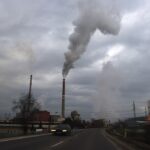“According to a study published in Current Biology, fungi play an important role in combating climate change by absorbing over a third of global fossil fuel emissions. The amount of carbon emissions absorbed by fungi is equivalent to China’s carbon pollution, surpassing the emissions of any other country, including the US. In terms of their biological characteristics, fungi, including mushrooms, are a part of a vast underground network present on every continent and are more similar to animals than plants. Providing a foundation for life on land and storing approximately 1/3 of the carbon from fossil fuel emissions, these underground networks of fungi form a symbiotic relationship with plant roots. Highlighting their potential contribution to achieving net zero emissions, the stored carbon in mycorrhizal fungi amounts to around 13 gigatons worldwide.
Lead researcher Dr. Heidi Hawkins of the University of Cape Town said, “A major gap in our knowledge is the permanence of carbon within mycorrhizal structures. We do know that it is a flux, with some being retained in mycorrhizal structures while the fungus lives and even after it dies. Some will be decomposed into small carbon molecules and, from there, either bind to particles in the soil or even be reused by plants. And certainly, some carbon will be lost as carbon dioxide gas during respiration by other microbes or the fungus itself.” Scientists are advocating for their inclusion in conservation and biodiversity policies to maximize their carbon sequestration capabilities, recognizing the importance of fungi. Posing risks to global climate regulation and ecosystems, soil ecosystems, where these fungi reside, are under threat from activities like agriculture and development. The efforts to limit global heating are undermined by the destruction of soil communities, jeopardizing the planet’s health and biodiversity.
Similar Post
The study’s co-author and University of Sheffield professor of plant-soil processes, Professor Katie Field, said, “Mycorrhizal fungi represent a blind spot in carbon modeling, conservation, and restoration; the numbers we’ve uncovered are jaw-dropping, and when we’re thinking about solutions for climate change, we should also be thinking about what we can harness that already exists.” We can mitigate climate change and ensure the health of ecosystems by protecting and preserving underground fungi networks. We have not yet fully understood the fate of carbon stored within mycorrhizal structures, but some of it remains in the fungi while other portions decompose into the soil or are used by plants.
To determine the long-term stability of carbon stored by fungi and its potential for long-lasting carbon sequestration, research is going on. They are serving as vital ecosystem engineers that facilitate nutrient cycles, and mycorrhizal fungi have been supporting life on land for at least 450 million years. As there is still much to learn, the study highlights the need to broaden our understanding of the role fungi play in Earth’s ecosystems. Often overlooked in conservation efforts with more focus placed on forests, fungi’s carbon storage capacity should not be underestimated. Fungi are essential for global diversity and the health of our planet, as their impact extends beyond carbon sequestration.
For maintaining productive agriculture and curbing rising temperatures, protecting and preserving soil ecosystems, including the underground fungal networks, is crucial. As the United Nations warns that 90% of topsoil could be at risk by 2050, the study underscores the urgency to address the degradation of soils. Harnessing the existing potential of mycorrhizal fungi as a natural solution should be considered in efforts to tackle climate change. It will help improve climate change mitigation strategies and inform future conservation policies if we understand the relationship between fungi and carbon storage. A vital piece of the puzzle in achieving global climate goals and reaching net-zero emissions is fungi’s carbon-capturing capability.
Co-founder of the Society for the Protection of Underground Networks and senior author from Vrije University Amsterdam, Professor Toby Kiers, stated, “Mycorrhizal fungi lie at the base of the food webs that support much of life on Earth, but we are just starting to understand how they actually work. There’s still so much to learn.” The study highlights the need for increased protection and conservation of underground networks to maintain their essential contributions to the planet. For sustainable land management, it is crucial to study the stability of carbon stored by fungi and the impact of human activities on these underground networks. We can enhance our understanding of the intricate balance between ecosystems and climate regulation by acknowledging the role of fungi in biodiversity and conservation. Offering promising avenues for climate change mitigation and ecosystem preservation, further research is needed to unlock the full potential of fungi and their intricate mechanisms.”


















